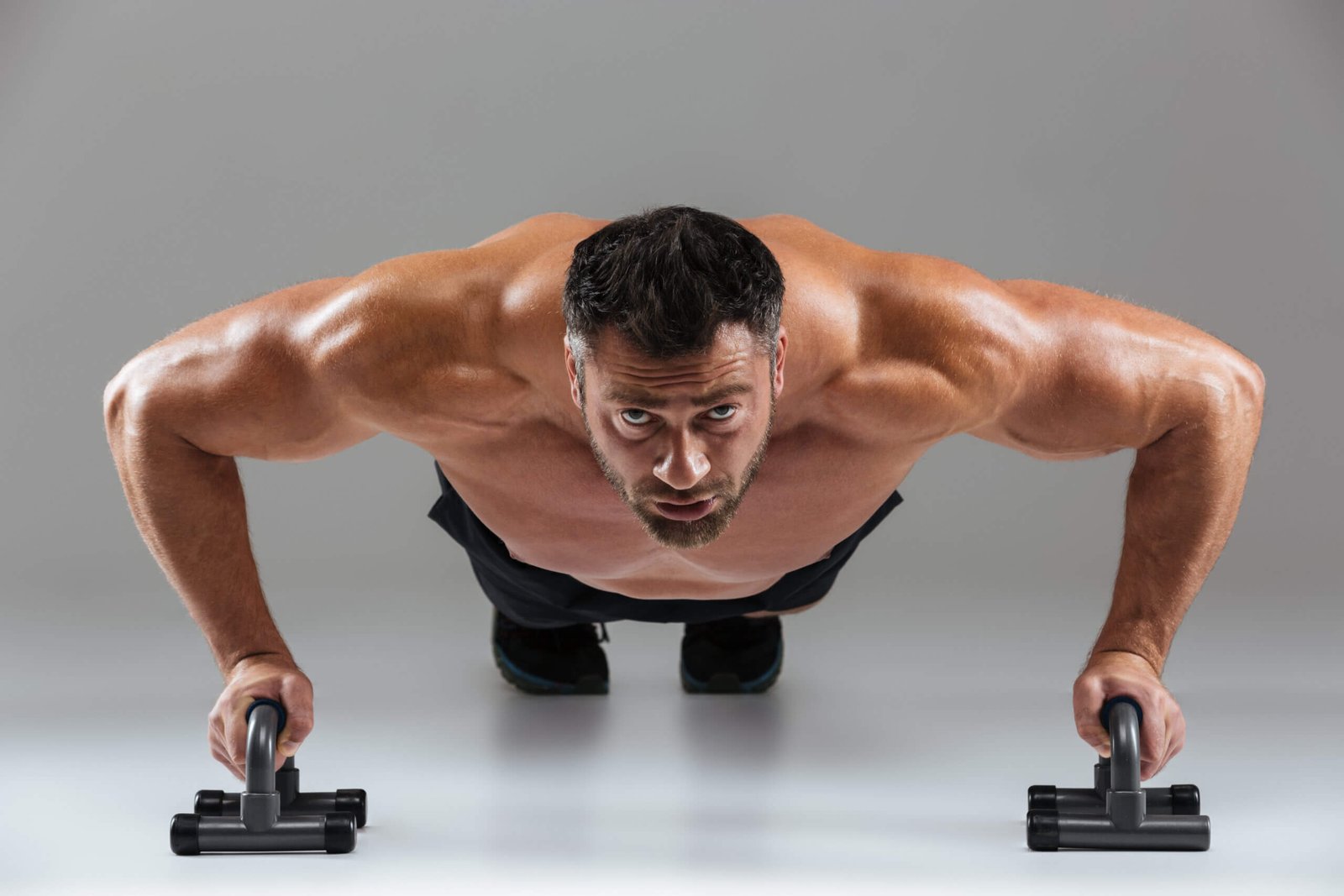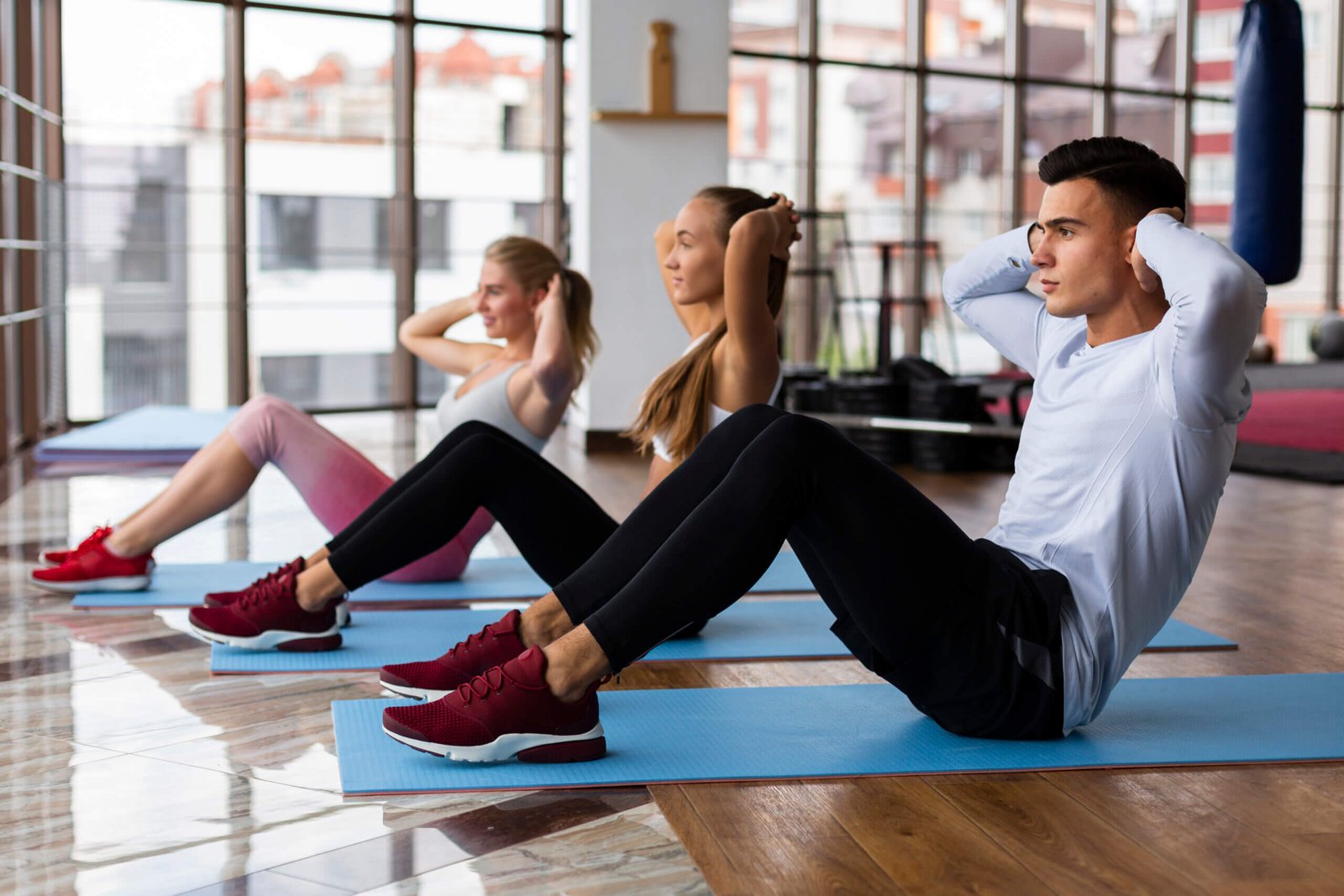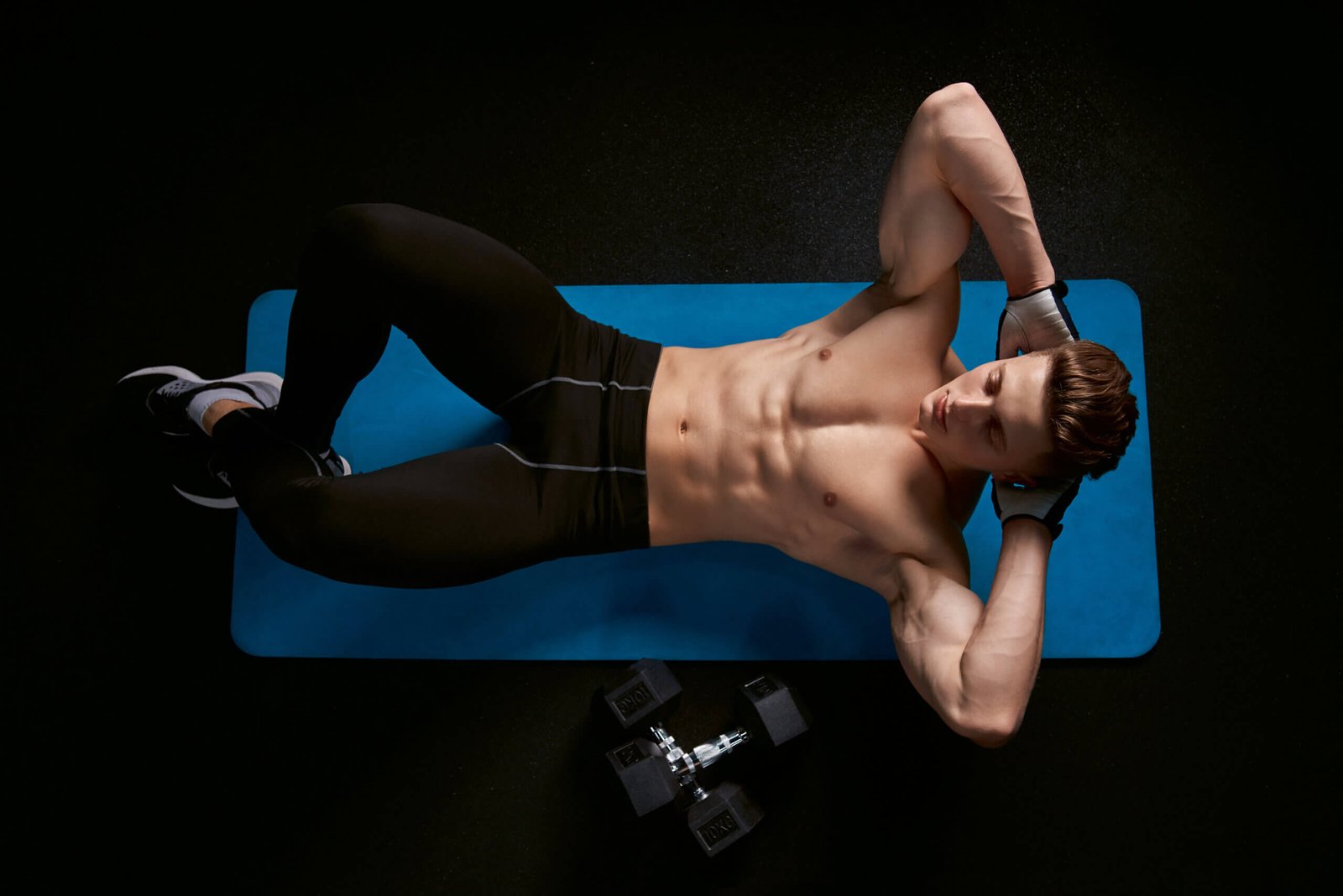
Stop Doing Push-Ups and Crunches welcome you to the ultimate guide on why pushups and crunches should be ditched. I mean, who wouldn’t want a strong and toned body, right? Let’s delve into the world of sarcasm and unveil the hidden treasures of avoiding these oh-so-basic workouts.
Are Toned Arms and a Chest Really Appealing?
Who needs well-defined biceps and a chiseled chest? We’ll explore why flabby arms and a non-existent chest might be the next big trend.
Joint Pain: The Real Fountain of Youth
Discover the undeniable benefits of avoiding pushups, especially the joy of experiencing joint pain that keeps you feeling young forever.
Who Wants Six-Pack Abs and absurdity of a flat stomach?
Why bother with a flat stomach and enviable six-pack abs when you can embrace dad bods and muffin tops? We’ll uncover the charm of saying no to a toned midsection.
Explore the latest fitness trend – neck strain
Who knew crunches could be replaced by the exquisite art of straining your neck muscles? It’s time to redefine what a core workout means.
Why bother with functional movements when you can revel in the joy of inefficiency? We’ll explore how avoiding traditional exercises can make your day-to-day activities a true comedic performance.
Who needs variety in their workout routine? We’ll guide you through the thrilling world of sticking to the same exercises, day in and day out, for the ultimate fitness monotony.
Are you getting worried by reading this article?
Relax now we acknowledge that sarcasm can be fun, but finding what works for you is the real punchline. Whether it’s pushups, crunches, or a hilarious dance routine, the key is to enjoy the journey. You should embrace your unique path to fitness hilarity.
Benefits of Best Weighted Push-ups

Stronger upper body
Push-ups are a powerhouse exercise renowned for their multifaceted benefits to upper body lift and strength. Targeting the pectoral muscles, Push-ups contribute to robust chest development and definition. Engagement of the deltoids and triceps ensures well-rounded shoulder and arm sculpting. In addition to activating the core, push-ups promote upper body stability and improve posture such as the upper body being above the abdomen and below the head. One of the key advantages lies in their efficiency, offering a comprehensive workout in a short span. Accessibility is another strength, as push-ups require no specialized equipment, making them adaptable to individuals of all fitness levels. Beyond the physical benefits, push-ups boost confidence through achievable goals and foster social connections through group workouts or challenges. In essence, incorporating push-ups into a fitness routine not only promotes upper body strength but also encapsulates a holistic approach to overall well-being. Well you don’t need further upper body exercise machine to tone your chest.
Core Engagement
Push-ups, often celebrated for their upper body benefits, also engage and strengthen the core. As individuals lower and lift their bodies during Push-ups, the abdominal muscles, including the rectus abdominis and obliques, are actively recruited to maintain a stable plank position. This consistent activation of the core muscles enhances abdominal strength and fosters overall core stability. The dynamic nature of push-ups requires the core to work as a stabilizing force, promoting improved posture and reducing lower back strain. Push-ups are a versatile exercise that significantly contributes to holistic core engagement and strength, including abdominal muscle repair.
No equipment needed
One of the remarkable aspects of push-ups is their accessibility, as they require no specialized equipment, making them an ideal exercise that can be performed virtually anywhere. Unlike certain gym routines that require expensive machinery or weights, push-ups rely solely on body weight for resistance. This simplicity makes push-ups cost-effective but also eliminates barriers to entry for those without gym access. Whether at home, in a park, or during travel, Push-ups shine as a workout that demands nothing more than a flat surface. This lack of dependency on equipment underscores the inclusivity and convenience of Push-ups. This ensures that individuals of all level fitness can seamlessly incorporate this effective exercise into their routines without additional tools.
Time efficiency
Push-ups stand out not only for their physical benefits but also for their remarkable time efficiency, making them a go-to exercise for busy people. This compound movement engages multiple muscle groups simultaneously, offering a comprehensive upper body workout in a short span. Unlike more time-consuming gym routines, Push-ups can be seamlessly integrated into daily activities, providing an effective fitness solution for time-pressed individuals. Push-ups are efficient in delivering results without the need for prolonged sessions, making them an excellent choice for those seeking a quick and impactful workout. Whether incorporated into a broader fitness routine or performed as standalone sets, Push-ups’ time efficiency underscores their effectiveness in accommodating fast-paced lifestyles. No need to allocate an extensive amount of time for your upper body cable workout.
Improved posture
Push-ups contribute to improved posture. As individuals engage in this fundamental exercise, the muscles responsible for maintaining proper posture are actively strengthened. The stability of the body during Push-ups is significantly influenced by the core muscles, such as the rectus abdominis and obliques They play a pivotal role in ensuring a straight and well-aligned spine. Furthermore, the participation of the trapezius and rhomboid muscles in the upper back enhances push up postural advantages. Over time, consistent practice of Push-ups encourages the development of muscle memory, fostering a natural and upright posture even outside of workout sessions. This emphasis on postural alignment not only enhances physical appearance but also reduces the risk of musculoskeletal issues associated with poor posture. This makes Push-ups a valuable exercise for spinal health and an upright, confident stance.
Joint Health
The benefits of push-ups extend to joint health as well. When performed properly, Push-ups are a low-impact, hardest bodyweight Push Workout that places little stress on joints, unlike some high-impact exercises. By lowering and raising the body during Push-ups, the joints in the shoulder and elbow move fluidly. Additionally, stabilizing muscles around joints contribute to joint strength and integrity. Individuals of all fitness levels and ages can benefit from Push-ups’ gentle yet effective approach to joint movement. Besides contributing to physical well-being, Push-ups make fitness more accessible for those seeking exercises with minimal joint impact.
Metabolism Boost

The versatile push-up contributes more than just muscle strength; it also boosts metabolism. It stimulates cardiovascular activity and engages multiple muscle groups simultaneously. During Push-ups, the increased demand on the body triggers a metabolic response, enhancing calorie burn. When the muscles support the body’s movement, the metabolic rate is temporarily elevated, promoting more efficient calorie burning. Regular push-ups contribute to a metabolic boost while strengthening the upper body, making them a valuable addition for those aiming to improve metabolism and lose weight.
Healthy Cardiovascular System
While push-ups are often associated with strengthening upper body muscles, they also play a crucial role in promoting the effects of physical activity on the cardiovascular system. Executed rhythmically and with control, push-ups transform into an efficient cardiovascular workout. The heart rate escalates as individuals descend and ascend, fostering improved blood circulation. The sustained cardiovascular activity during push-ups contributes to enhanced heart health, increased stamina, and improved cardiovascular fitness. Recognizing the cardiovascular advantages, push-ups emerge as a valuable component in a comprehensive fitness regimen, addressing both strength and the effects of physical activity on the cardiovascular system.
Functional Fitness
Despite their simplicity, Push-ups contribute significantly to functional fitness—the ability to perform daily activities efficiently and effectively. This exercise involves multiple muscle groups, mirroring the movements required in everyday life. It promotes a holistic approach to functional strength as Push-ups engage the upper body, core, and lower body muscles. The muscle engagement cultivated by Push-ups enhances overall functional fitness, whether pushing open doors, lifting objects, or maintaining balance. Push-ups simulate real-world movements, fostering a fitness level that translates seamlessly into enjoying everyday life activities.
Improved Mood
Physical benefits of push-ups extend to mental well-being, including an improved mood. As a result of physical activity, such as Push-ups, endorphins are released, the body’s natural mood lifters. Push-ups are repetitive and rhythmic, and their satisfaction of finishing a set fosters a positive mindset. The release of endorphins promotes well-being by reducing stress and depression. Adding push-ups to your daily routine goes beyond mere physical exercise; it fosters positive mental health and resilience. This comprehensive approach helps explain the tangible physical benefits of warming up for and cooling down from a workout activity.
Adaptability
One of the standout features of Push-ups lies in their adaptability. This makes them a versatile exercise suitable for individuals of all fitness levels and preferences. Whether you are a fitness enthusiast with an established routine or a beginner seeking a starting point, Push-ups can be tailored to meet diverse needs. The simplicity of this bodyweight exercise allows for various modifications, including adjusting hand placement, altering the incline, or incorporating variations like diamond push-ups. This adaptability accommodates different fitness levels and makes push-ups accessible in various settings, from superb home workouts to outdoor training sessions. The ability to customize Push-ups ensures that individuals can integrate this effective exercise seamlessly into their fitness journey. This highlights its inclusive and adaptable nature.
Increased flexibility
While push-ups are primarily recognized for building strength, they also contribute to increased flexibility when performed with proper form. The controlled movement of lowering and raising the body engages multiple muscle groups, promoting a full range of motion in the shoulders, elbows, and wrists. Additionally, the stretch and extension of the abdominal muscles during push-ups contribute to improved elasticity. Over time, incorporating push-ups into a regular fitness routine can enhance joint flexibility, particularly in the upper body. While not a replacement for dedicated flexibility exercises, Push-ups add a dynamic element to overall flexibility training. This makes them a valuable addition for those seeking a comprehensive approach to fitness.
Enhanced muscle definition
Push-ups stand out as a fundamental exercise that extends beyond building strength, enhancing muscle definition. This bodyweight exercise targets key muscle groups, including the chest, shoulders, triceps, and core. The controlled movement of lowering and raising the body during push-ups not only strengthens these muscles but also contributes to their definition. As individuals progress in their push-up practice, the muscles become more toned and sculpted, resulting in a more defined and chiseled appearance. The comprehensive engagement of multiple muscle groups during Push-ups ensures that muscle definition is not limited to isolated areas but encompasses the upper body as a whole. This makes Push-ups a valuable tool for those aiming to achieve a well-defined and sculpted physique.
Cost-Effective Fitness:
One of the most appealing aspects of push-ups is their cost-effectiveness, making them an accessible fitness solution for individuals of all backgrounds. Unlike gym memberships or specialized equipment that incur significant expenses, push-ups require a flat surface. Whether performed at home, in a park, or during travel, Push-ups ensure a fit and healthy lifestyle remains within reach for everyone.
Boosted Confidence:

Beyond physical benefits, push-ups enhance confidence. As individuals progress in their push-up practice, mastering variations and increasing repetitions, they experience a tangible sense of achievement. This accomplishment, coupled with the visible improvements in strength and muscle tone, fosters a positive self-image and instills confidence in one’s physical abilities, both inside and outside the workout space.
Social Connections:
Push-ups, often considered a solitary exercise, can also foster social connections when incorporated into group fitness settings or challenges. Whether participating in virtual push-up challenges with friends or joining group workout sessions, the shared experience of conquering Push-ups creates camaraderie. This social aspect not only adds an enjoyable dimension to exercise but also contributes to a supportive and motivating fitness community.
Muscles Strength:
Push-ups, with their repetitive nature and engagement of multiple muscle groups, contribute significantly to muscle endurance. As individuals perform consecutive push up sets, the muscles involved are trained to withstand fatigue and exertion over an extended period. This increased muscle endurance not only enhances performance during Push-ups but also translates to improved stamina in various physical activities. This promotes overall fitness and endurance.
Full-Body Activation:
Push-ups are celebrated for their ability to activate a wide array of muscles, resulting in a full-body workout. While the primary focus is on the chest, shoulders, and triceps, Push-ups also engage the core, back, and leg muscles for stability. This comprehensive activation ensures that multiple muscle groups work synergistically, promoting balanced muscle development and functional strength throughout the entire body. Push-ups are a time-efficient and effective exercise for those seeking a holistic approach to fitness.
Benefits of Crunches:

Core Strengthening:
Crunches are renowned for targeting core muscles, particularly the rectus abdominis. The controlled movement of lifting the upper body off the ground during crunches engages and strengthens the abdominal muscles. This contributes to a more stable and robust core. This core strength is foundational for various daily activities and plays a vital role in maintaining overall stability.
Abdominal muscle engagement:
As a dedicated abdominal exercise, crunches target the abdominal muscles. The repetitive contraction and relaxation of these muscles during crunches improve muscle tone and definition. Regular chair abdominal exercises, such as crunches, in a fitness routine can shape a sculpted and well-defined midsection.
Improvement in posture:
Crunches promote better posture by strengthening the core muscles that support the spine. As the abdominal muscles become stronger through regular butterfly crunch exercises, they provide increased support to the spine, reducing the likelihood of slouching or poor posture. Improved posture not only contributes to a more confident appearance but also reduces the risk of discomfort or injury.
Enhanced Flexibility:
While crunches build strength, they also contribute to spine flexibility. The controlled movement of flexing and extending the upper body during crunches promotes flexibility in the vertebral column. This flexibility is crucial for maintaining a healthy range of motion and preventing lower back stiffness.
Muscle Endurance:
Crunches, when performed with proper form and repetition, increase muscle endurance in the abdominal region. Abdominal muscle endurance exercises, such as regular crunching exercises, enhance the ability of muscles to sustain contractions over an extended period. This improved endurance helps maintain stability during various physical activities.
Accessible exercise:
One of the notable advantages of crunches is their accessibility. They can be performed virtually anywhere, requiring minimal space and no specialized equipment. Crunches are the best way to exercise without a gym, providing a convenient exercise option for diverse lifestyles. This allows individuals to strengthen their abdominals without the need for a gym or a specific workout environment.
Variety of Variations:
Crunches offer a variety of variations, allowing individuals to target different areas of the abdominal muscles and add diversity to their workout routine. Whether incorporating twists, reverse crunches, or bicycle crunches, modifying your personal action plan can impede personal fitness goals. Crunch exercises enable individuals to tailor their workouts to address specific fitness goals and preferences.
Calorie Expenditure:

While not primarily cardiovascular exercise, crunches contribute to calorie expenditure as they engage multiple muscle groups. The energy expended during crunch exercises, coupled with the muscle-building effect, supports calorie burn. The calorie expenditure definition in this context highlights how crunches, while not a substitute for dedicated cardio workouts, can play a role in a comprehensive fitness routine.
Spinal Stability Muscle:
The emphasis on engaging the core muscles in crunches contributes to spinal stability, making them effective for building spinal stability muscles. The strengthened core supports the spine, reducing strain or injury. This spinal stability is crucial for maintaining a healthy back and minimizing discomfort, particularly for individuals who spend extended periods sitting or working at a desk.
Convenient for Home Workouts:
Crunches stand out as a best home workout exercise. Their simplicity and minimal space requirements make them suitable for individuals who prefer exercising in their homes. Incorporating crunches into a home workout routine offers a practical and effective way to strengthen the core without extensive equipment or gym access.
Disadvantages of Push-ups

Overuse Injuries:
Performing Push-ups excessively or with improper form can lead to overuse injuries, particularly in the shoulders, wrists, and elbows.
Limited Lower Body Engagement:
Push-ups primarily target the upper body, neglecting the lower body muscles. For a comprehensive workout, additional exercises are required.
Not Ideal for Beginners:
Individuals with limited upper body strength may find Push-ups challenging, potentially leading to frustration and discouragement for beginners.
Risk of Lower Back Strain:
Improper form, such as sagging the lower back, can increase the risk of lower back strain during Push-ups.
May Aggravate Existing Injuries:
People with existing shoulder, wrist, or elbow injuries should approach Push-ups cautiously, as improper execution can exacerbate these issues.
Difficulty in Progression:
Once an individual reaches a certain level of proficiency in Push-ups, it can be challenging to increase the difficulty or intensity without incorporating variations or additional equipment.
Requires Upper Body Strength:
As a predominantly upper body exercise, Push-ups may be less accessible for individuals with limited upper body strength, potentially excluding a significant portion of the population.
May Not Address Specific Fitness Goals:
Depending on individual fitness goals, Push-ups may not be the most effective exercise for everyone. Tailoring workouts to specific objectives may require incorporating a variety of exercises.
Risk of Wrist Strain:
Improper hand placement or excessive pressure on the wrists during Push-ups can lead to wrist strain or discomfort.
Potential for Muscle Imbalances:
Relying solely on Push-ups for upper body strength may contribute to muscle imbalances, as certain muscle groups may be overworked while others are underutilized.
Neck Strain:
Incorrect form during crunches, such as pulling on the neck, can lead to neck strain and discomfort.
Limited Caloric Burn:
Crunches alone may not contribute significantly to overall calorie burn compared to cardio exercises, potentially limiting their effectiveness for weight loss.
Focus on Superficial Muscles:
Crunches primarily target the superficial muscles of the abdomen, neglecting the deeper core muscles and potentially leading to imbalances.
Risk of Lower Back Pain:
Poor form, such as lifting the entire upper body off the ground, can strain the lower back and lead to discomfort.
Not Suitable for Everyone:
Individuals with certain back conditions or injuries may find traditional crunches uncomfortable or unsuitable for their fitness level.
Potential for Muscle Imbalances:
Relying solely on crunches for core strength may lead to muscle imbalances, as other core muscles may be underutilized.
May Contribute to Poor Posture:
Incorrectly performed crunches, especially if done excessively, may contribute to poor posture by overemphasizing flexion of the spine.
Limited Range of Motion:
The range of motion in traditional crunches is limited compared to some other core exercises, potentially limiting their effectiveness in targeting all areas of the core.
Repetitive Strain on the Spine:
The repetitive nature of crunches, especially if performed daily without adequate rest, can put strain on the spine and lead to discomfort.
Conclusion:
Engaging in a regular routine of Push-ups and crunches can profoundly impact our lives in positive ways, contributing to both physical and mental well-being. These exercises, when performed correctly and as part of a balanced fitness regimen, offer a multitude of benefits that extend beyond just physical fitness.
Physical Strength and Endurance:
By incorporating Push-ups into our workout routine, we enhance upper body strength, targeting muscles in the chest, shoulders, and arms. Simultaneously, crunches strengthen the core, promoting overall stability and endurance. This newfound physical strength translates into improved daily activities and a heightened ability to handle physical challenges.
Enhanced Posture and Flexibility:
Push-ups and crunches, when executed with proper form, contribute to improved posture. The engagement of core muscles in crunches supports spinal alignment, reducing the likelihood of slouching or discomfort. Additionally, the controlled movements in both exercises promote flexibility, ensuring a healthy range of motion in various body regions.
Mental Well-being and Stress Reduction:
Regular physical activity, including Push-ups and crunches, is linked to mental well-being. Exercise releases endorphins, the body’s natural mood elevators, leading to increased feelings of happiness and reduced stress. The rhythmic nature of these exercises provides a meditative aspect, offering a mental break from daily stressors.
Efficient Time Management:
The simplicity and accessibility of Push-ups and crunches make them efficient exercises for those with busy lifestyles. They require minimal equipment and can be performed virtually anywhere, making it easier to incorporate consistent physical activity into our daily routines. This time efficiency encourages adherence to a regular workout schedule.
Positive Body Image and Confidence:
The physical benefits of Push-ups and crunches often translate into positive changes in body composition. As individuals witness improvements in muscle tone and definition, a positive body image can emerge. This positive self-perception contributes to enhanced confidence and self-esteem.
Long-term Health and Disease Prevention:
Regular engagement in Push-ups and crunches is associated with long-term health benefits. These exercises contribute to cardiovascular health, muscle maintenance, and weight management. The cumulative impact of a consistent workout routine can aid in preventing various health conditions and promoting overall well-being.
In conclusion, incorporating Push-ups and crunches into our fitness routine is not just about sculpting a visually appealing physique; it’s about cultivating a healthier and more resilient lifestyle. The holistic benefits extend beyond the physical realm, positively influencing our mental outlook, daily functioning, and long-term health. As with any exercise regimen, it’s crucial to prioritize proper form, gradual progression, and a well-rounded fitness approach for optimal results.
STOP DOING PUSHUPS AND CRUNCHES- FAQs:
Q: Can I do Push-ups and crunches every day?
A: While these exercises can be done frequently, giving your muscles time to rest and recover is crucial. Aim for at least one day of rest between sessions to prevent overtraining.
Q: Can Push-ups and crunches help with weight loss?
A: While they contribute to overall fitness, targeted weight loss requires a combination of exercises and a balanced diet. Incorporate cardio and strength training for comprehensive results.
Q: Are there variations for beginners?
A: Yes, modified versions of Push-ups and crunches exist for beginners. Start with incline Push-ups and partial crunches, gradually progressing to standard forms as strength increases.
Q: Can Push-ups replace chest exercises with weights?
A: Push-ups are effective for building chest strength, but a well-rounded routine may include a mix of bodyweight and weighted exercises for optimal muscle development.
Q: Do crunches alone give a flat stomach?
A: While crunches strengthen abdominal muscles, achieving a flat stomach involves overall body fat reduction through a combination of exercise and a healthy diet.
Q: How can I prevent wrist pain during Push-ups?
A: Ensure proper hand placement and distribute weight evenly. If pain persists, try push up variations that reduce wrist strain or consult a fitness professional.
Q: Are crunches safe for individuals with back issues?
A: Individuals with back concerns should consult a healthcare professional before starting any exercise regimen. Modified or alternative exercises may be recommended.
Q: Can Push-ups and crunches be done during pregnancy?
A: Pregnant individuals should consult their healthcare provider. Modified exercises may be suitable, but it’s essential to prioritize safety and comfort.
Q: How many Push-ups and crunches should I do for a workout?
A: The ideal number varies based on fitness level. Start with a manageable amount and gradually increase. Quality of form is more important than quantity.
Q: Can Push-ups and crunches replace a full workout routine?
A: While they offer excellent benefits, a comprehensive fitness routine should include a variety of exercises to target different muscle groups and aspects of fitness.
2 thoughts on “Stop Doing Push-Ups and Crunches”